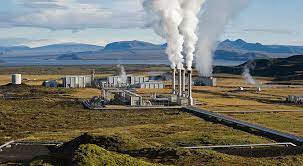State-owned Oil and Natural Gas Corporation (ONGC) on Monday said it will implement India’s maiden geothermal field development project in Ladakh that will use the heat generated by the Earth’s core to generate clean energy. “A memorandum of understanding (MoU) to formalise this has been inked by ONGC Energy Centre (OEC) with the Union Territory of Ladakh and Ladakh Autonomous Hill Development Council, Leh on February 6,” the company said in a statement. At 14,000 feet in Ladakh, ONGC is getting ready to pump geothermal energy. State-run explorer ONGC has set out on a mission to harness the steam streaming from the earth’s core at Puga, a lonely valley off the road to Chumar on the de facto boundary with China, at a height of more than 14,000 feet. In India, geothermal energy is nothing new. The Indian government first provided a report on the nation’s geothermal hotspots in 1973. This occurred after shallow drilling exploration by the Geological Survey of India (GSI) revealed prospective hot spring and geothermal areas. According to estimates, India has the ability to produce 10 gigawatts of geothermal energy.
Geothermal energy in Ladakh: Key Points
- A sea of molten rocks emits heat from deep within the earth’s crust. They can occasionally erupt as volcanoes or hot springs. It is intended to capture some of this enormous amount of heat energy and transform it into electricity.
- Geologists first look for geothermal energy hotspots, and then they look for areas of broken rock where heat can escape.
- Next, wells are drilled to release thermal energy as steam and hot water, which are then used to power turbines and generate electricity.
- Since the heat emitted from the earth’s interior is virtually inexhaustible and is anticipated to last for billions of years, geothermal energy is regarded as renewable. Additionally, it is accessible 365 days a year, unlike sun and wind.
- Compared to coal and oil, geothermal energy produces about 80% less greenhouse gas emissions. Unlike wind and solar, a geothermal plant is constantly operational.
Geothermal energy in Ladakh: Puga Valley
The Puga Valley in Jammu and Kashmir’s Ladakh region was one of the places that had a lot of potential for geothermal energy. Puga is a component of the Himalayan geothermal belt and is located in the southernmost region of Ladakh. Hot springs, mud pools, sulphur deposits, and borax deposits are all signs of geothermal activity in Puga area.
China now has geothermal energy projects active in different regions of the Tibetan Plateau with comparable geographic characteristics. The expense of geothermal energy exploration is high. The main obstacle is cost reduction so that even a small 5 kilowatt plant can electrify rural regions and make it feasible to build minor geothermal fields in places like Puga Valley.
